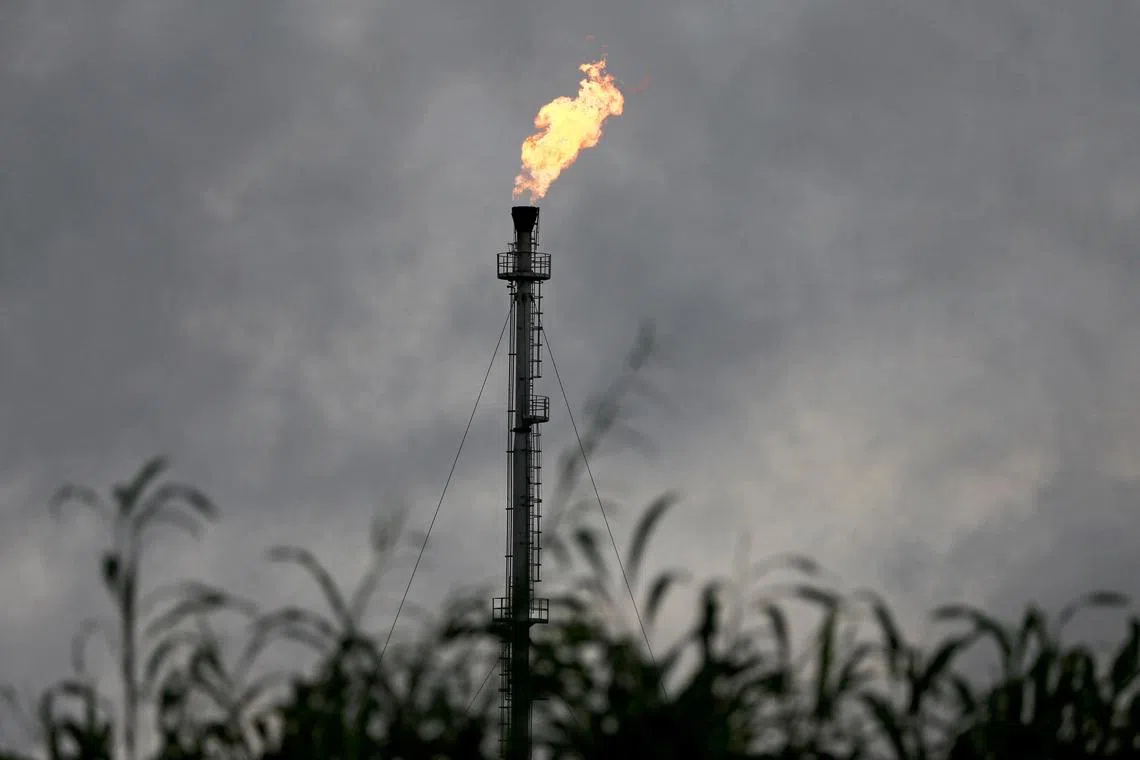$112 million methane-tracking satellite backed by billionaire Bezos lost in space
Sign up now: Get ST's newsletters delivered to your inbox

Methane is a potent greenhouse gas, with 80 times the warming power of carbon dioxide over a 20-year period.
PHOTO: REUTERS
Follow topic:
- MethaneSAT, a US$88 million satellite tracking methane emissions, was lost in space after operating since March 2024.
- The Environmental Defence Fund (EDF) views this as a setback, not a failure, and will continue methane leak detection efforts.
- Despite the satellite loss and limited action by "super-emitters", EDF aims to continue to track methane emissions in the future.
AI generated
WASHINGTON – An US$88 million (S$112 million) satellite backed by billionaire Jeff Bezos that detected oil and gas industry emissions of the powerful greenhouse gas methane has been lost in space, the group that operates said on July 1.
MethaneSAT had been collecting emissions data and images from drilling sites, pipelines, and processing facilities around the world since March, but went off course around 10 days ago, the Environmental Defence Fund (EDF), which led the initiative, said.
Its last known location was over Svalbard in Norway and EDF said it did not expect it to be recovered as it had lost power.
“We’re seeing this as a setback, not a failure,” Ms Amy Middleton, senior vice-president at EDF, told Reuters. “We’ve made so much progress and so much has been learned that if we hadn’t taken this risk, we wouldn’t have any of these learnings.”
The launch of MethaneSAT in March 2024 was a milestone in a years-long campaign by EDF to hold accountable the more than 120 countries that in 2021 pledged to curb their methane emissions.
It also sought to help enforce a further promise from 50 oil and gas companies made at the Dubai Conference of the Parties or COP28 climate summit in December 2023 to eliminate methane and routine gas flaring.
Methane is a potent greenhouse gas, with 80 times the warming power of carbon dioxide over a 20-year period.
Scientists say capping leaks from oil and gas wells and equipment is therefore one of the fastest ways to start tackling the problem of global warming.
While MethaneSAT was not the only project to publish satellite data on methane emissions, its backers said it provided more detail on emissions sources and it partnered with Google to create a publicly available global map of emissions.
Engineers investigating
EDF reported the lost satellite to US federal agencies including the National Oceanic and Atmospheric Administration, Federal Communications Commission and the US Space Force on July 1, it said.
Building and launching the satellite cost US$88 million, according to the EDF. The organisation had received a US$100 million grant from the Bezos Earth Fund in 2020 and got other major financial support from Arnold Ventures, the Robertson Foundation and the TED Audacious Project and EDF donors. The project was also partnered with the New Zealand Space Agency.
EDF said it had insurance to cover the loss and its engineers were investigating what had happened.
The organisation said it would continue to use its resources, including aircraft with methane-detecting spectrometers, to look for methane leaks.
It also said it was too early to say whether it would seek to launch another satellite but believed MethaneSAT proved that a highly sensitive instrument “could see total methane emissions, even at low levels, over wide areas”.
Despite the efforts to increase transparency on emissions, methane “super-emitters” have rarely taken action when alerted that they are leaking methane, the United Nations said in a 2024 report.
The pressure on them to do so has decreased as the US under US President Donald Trump’s second administration has effectively ended a US programme to collect greenhouse gas data from major polluters and rescinded Biden-era rules aimed at curbing methane. REUTERS

